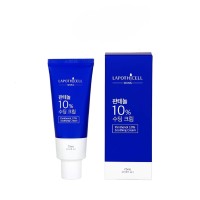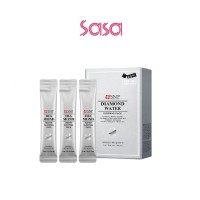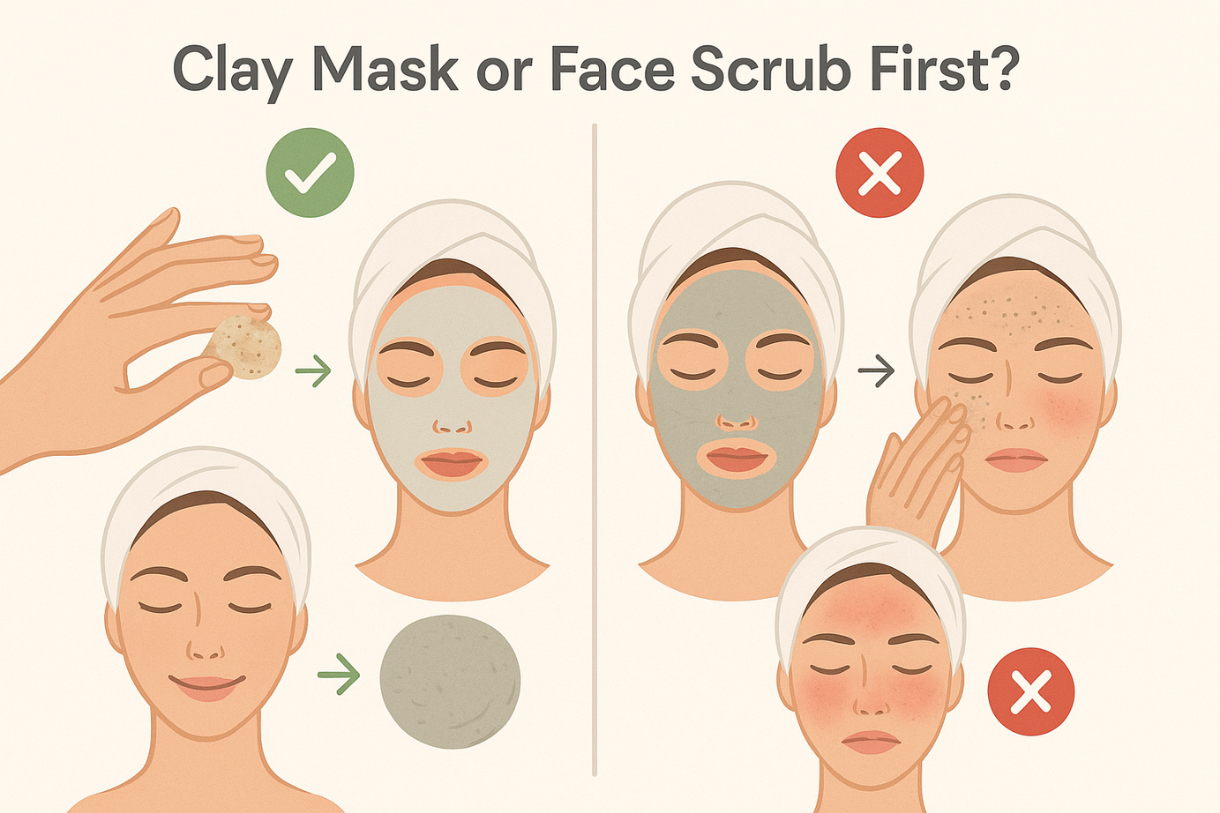
Wondering whether to grab that clay mask or scrub first during your daily skincare routine? You’re not alone. Many people mix up this order, which can leave skin feeling tight and irritated or even cause breakout flare-ups. The truth is, using these powerful skincare products in the wrong sequence wastes their benefits and risks harming your skin barrier.
This guide cuts through the confusion with clear, dermatologist-backed steps. You’ll learn why exfoliation should almost always come first, how your skin type changes the rules, and which Sa Sa beauty products pair perfectly for enlarged pores, dullness, or sensitivity. No jargon—just actionable advice for glowing skin.
Why Does Order Matter in Your Skincare Routine?
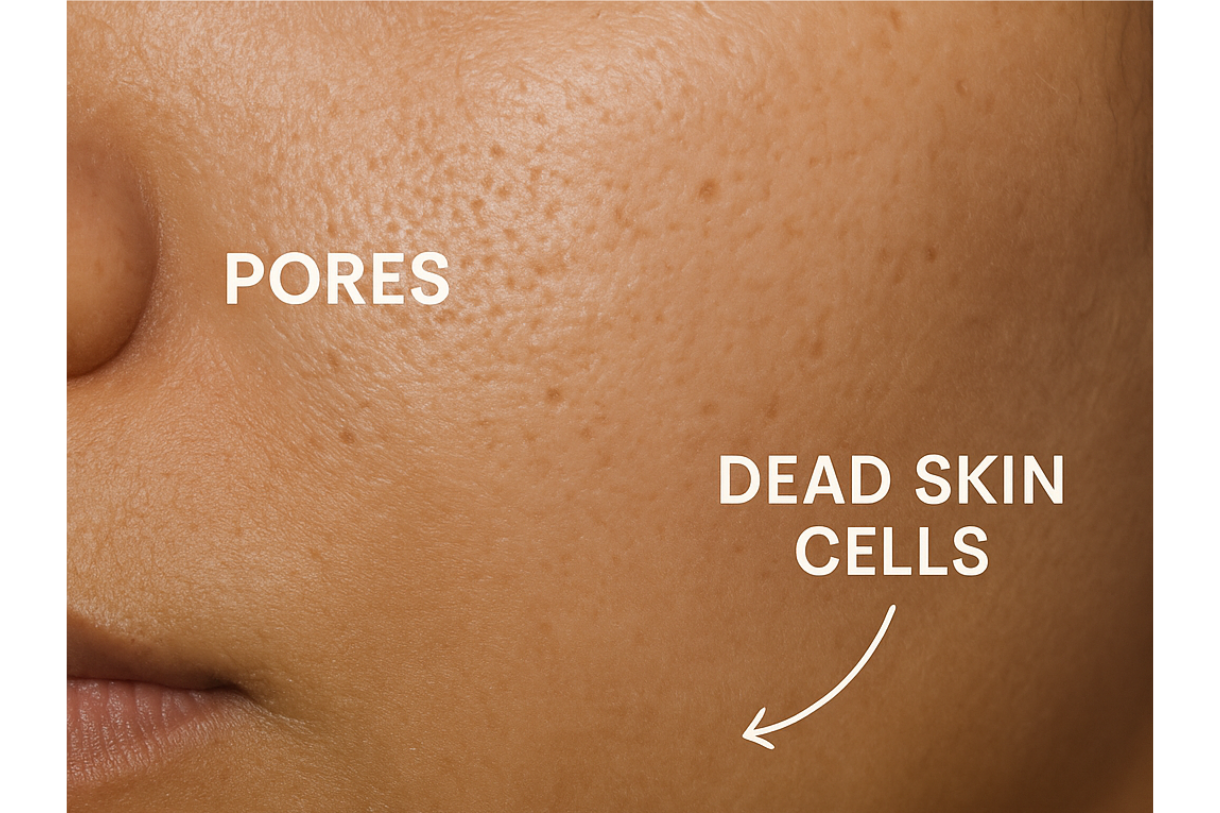
Exfoliating and masking serve different purposes. A scrub removes dead cells sitting on your skin’s surface—think of it like clearing debris from a drain. If you apply a clay mask before scrubbing, you’re trying to deep-clean a clogged surface. The mask can’t reach the pore-trapped impurity effectively.
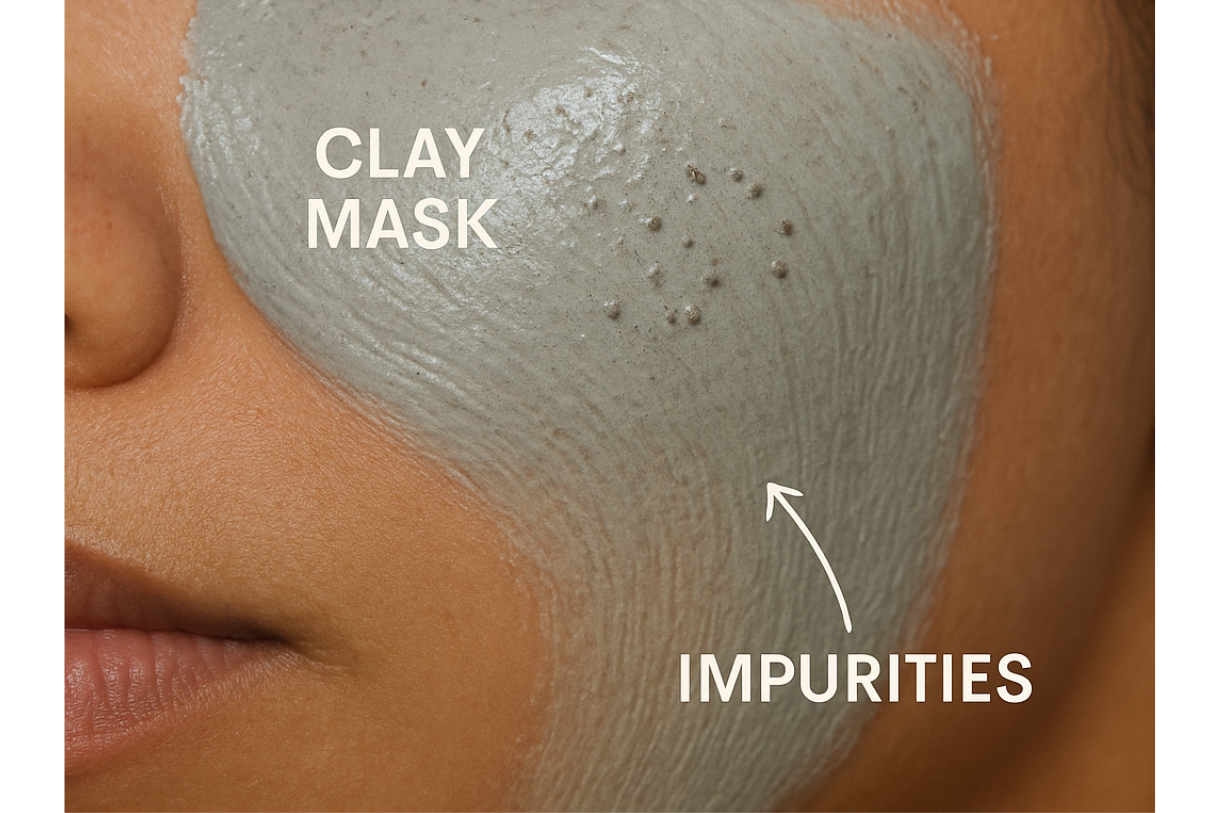
When you exfoliate first, you strip away that first layer of dead skin. This lets the clay mask absorb excess oil and gunk from now-open pores. Reverse the steps, and you risk pushing dead cells deeper or irritating skin with gritty particles over a dried clay mask. The right order isn’t just about better results—it prevents redness and dry skin.
Scrub First or Mask First? The Core Rule Explained
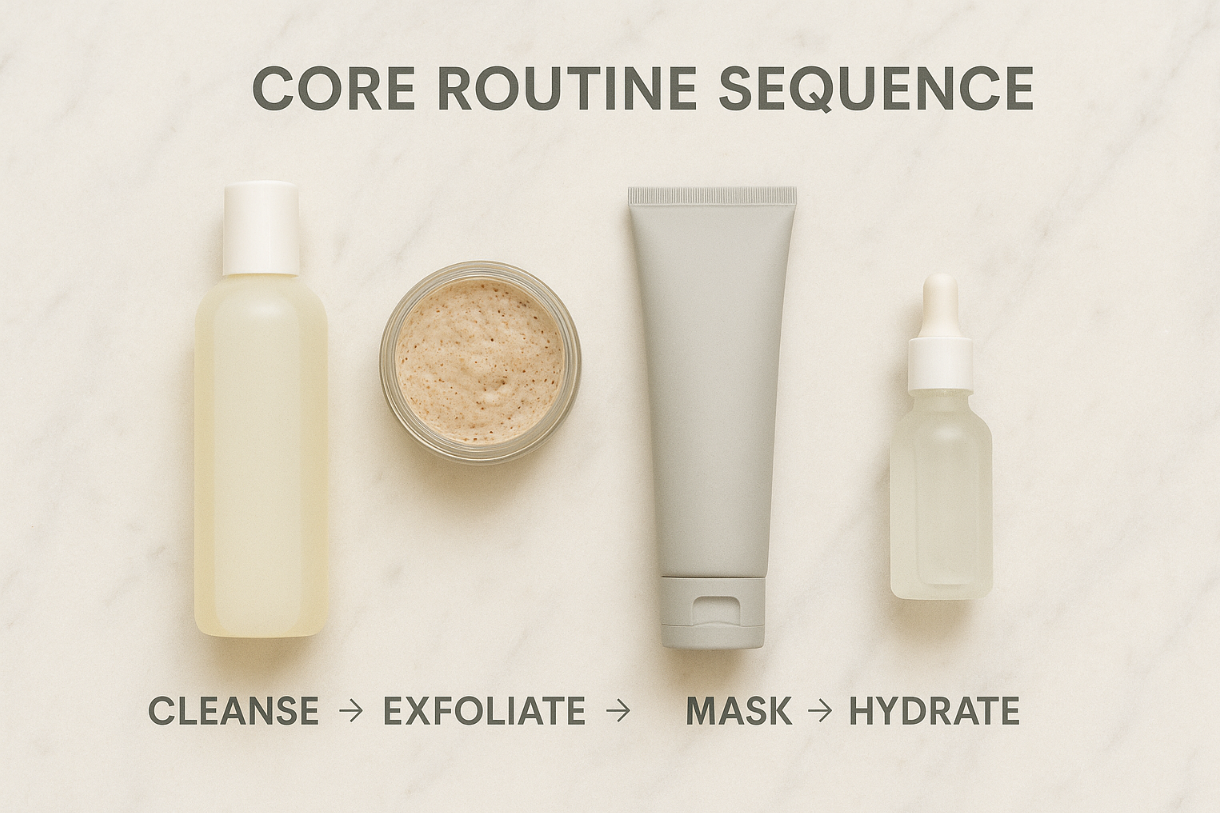
Scrub comes first. Always. Exfoliation clears dead skin so your mask penetrates deeper. Start by cleansing your face with a gentle cleanser—this lifts dirt without stripping skin. Next, use a scrub in circular motions, focusing on oily areas like the T-zone. Rinse thoroughly. Now apply your clay mask. Smooth and apply a thin layer, avoiding delicate spots like around your eyes. Wait 10 minutes. As it dries, it absorbs excess oil and toxins. Rinse with cool water to tighten pores. Finish by hydrating with a hydrating mask or moisturizer to restore balance. This sequence tackles dullness and firm skin in one go.
How Skin Type Changes the Game: Dry vs. Oily vs. Sensitive
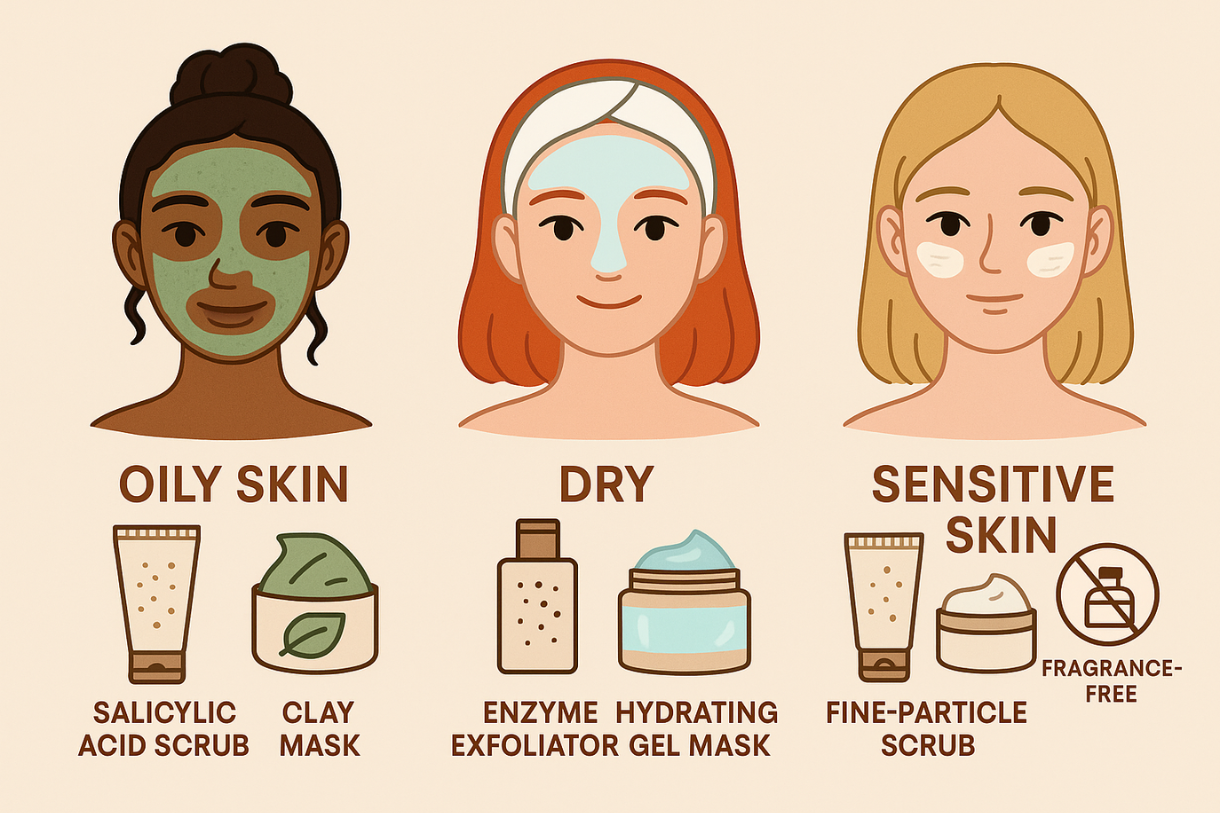
Your skin type directly shapes how you should exfoliate and use a clay mask. Ignoring these risks, irritation, or wasted results. Here’s how to adapt:
Oily or Acne-Prone Skin
Start with a scrub containing salicylic acid or lactic acid. These dissolve dead skin and unclog pore buildup. Follow with a clay mask to absorb excess oil and reduce enlarged pores. Limit to twice a week to avoid stripping natural moisture.
Sa Sa Pick: SOO BEAUTE Moisture Lock Toner (gentle daily exfoliant).
Dry or Dehydrated Skin
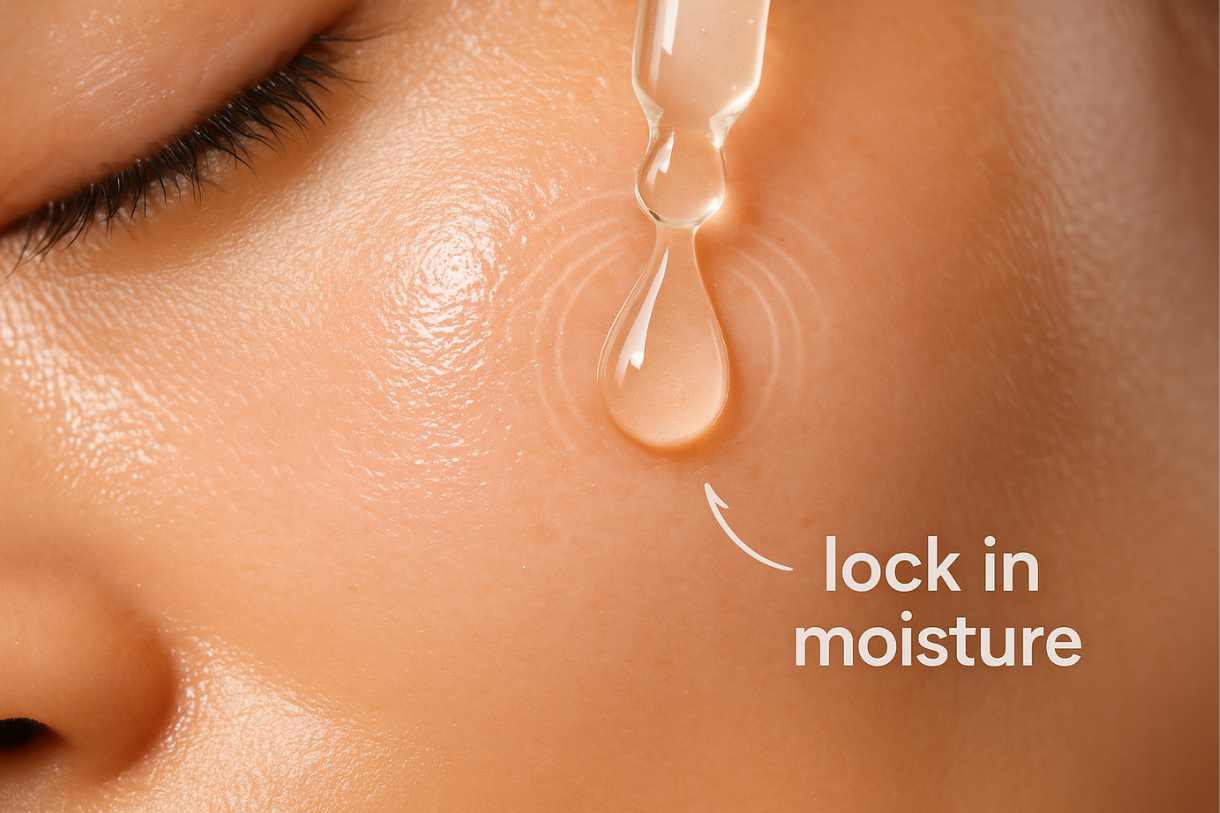
Skip gritty scrubs. Use an exfoliating enzyme product instead—it clears dead cells without abrasion. After rinsing, apply a hydrating mask with hyaluronic acid to nourish and plump skin. Never leave clay masks on past 10 minutes; they can worsen dry skin.
Sa Sa Pick: SNP Diamond Water Sleeping Pack (hydrates the skin overnight).
Sensitive or Reactive Skin
How to Properly Exfoliate Your Skin
Exfoliate only once a week using ultra-fine particles. Avoid clay masks with menthol or fragrances. Opt for kaolin-based formulas—they gently detoxify without redness. Always moisturize immediately after rinsing to shield your skin barrier.
Sa Sa Pick: Lapothicell Panthenol 10% Soothing Cream (calms irritation).
Step-by-Step: The Ideal Routine for Maximum Results
Follow this sequence for brighter, smoother skin:
- Cleanse: Use lukewarm water and a mild cleanser. Massage for 60 seconds to lift dirt.
- Exfoliate: Use a scrub on damp skin. Focus on the T-zone and cheeks for 30 seconds. Rinse.
- Mask: Apply a thin clay mask layer. Avoid lips/eyes. Wait 8-10 minutes.
- Hydrate: Lock in moisture with a face serum or sheet mask.
Pro Tip: For dullness, add a vitamin C serum after masking. It boosts cell renewal and complexion radiance.
Can You Use a Clay Mask and Scrub Together?
Yes, but never at the same time. Always space them out:
- Scrub in the AM, clay mask in the PM.
- Or exfoliate on Monday and mask on Thursday.
Combining them back-to-back (e.g., scrubbing then masking) is safe only if you:
- Have resilient skin
- Use gentle formulas
- Hydrate intensely afterward
Sensitive skin types should skip same-day use.
Top 3 Mistakes to Avoid
Even with the right order, small errors sabotage results:
Mistake 1: Too Much Scrubbing
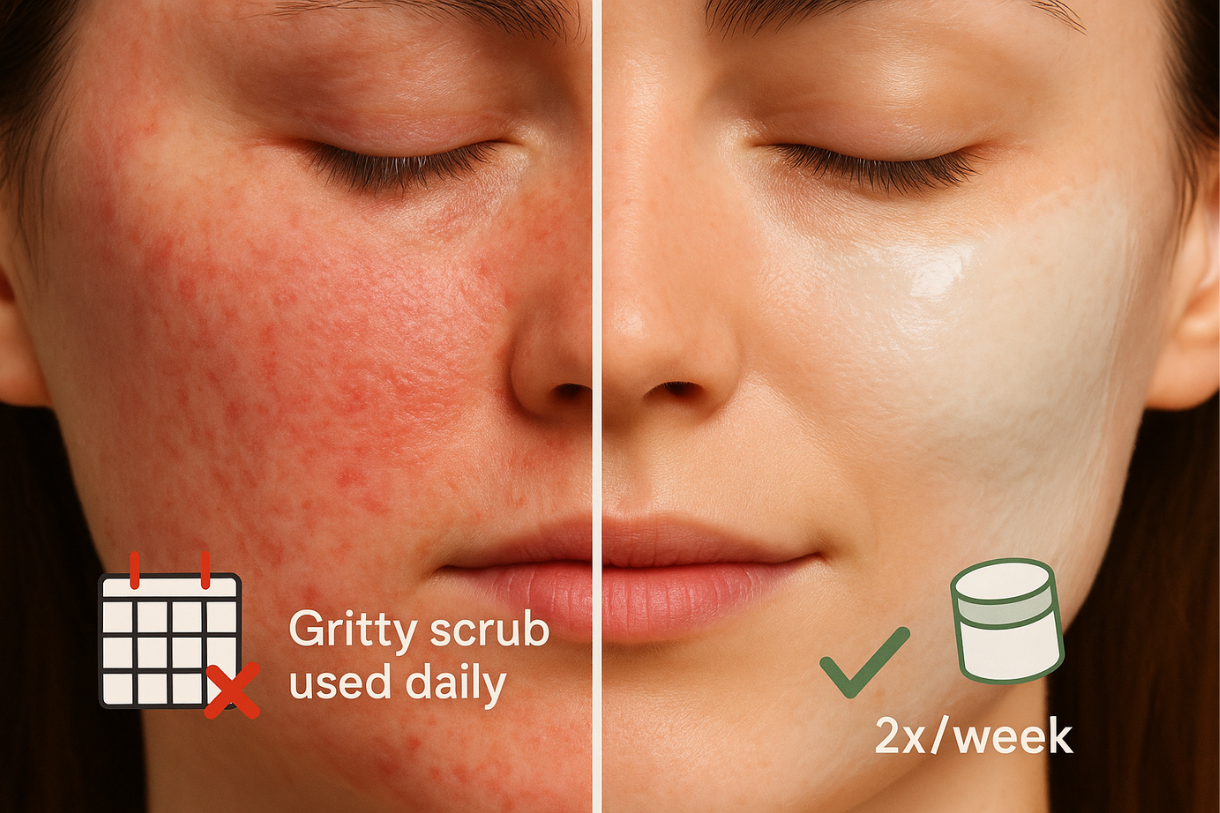
Exfoliating the skin more than twice a week strips its protective layer. This invites redness, breakouts, and dry skin. Gritty scrubs should never be used daily—swap for chemical exfoliants like lactic acid if your skincare routine needs frequent renewal.
Mistake 2: Skipping the Moisture Lock
After a clay mask, the skin is thirsty. Forgetting to hydrate with a face serum or moisturizer weakens your skin barrier. Always follow with hydration, especially if targeting firmness or elasticity.
Mistake 3: Masking Over Broken Skin
Never apply a mask to active acne or cuts. Clay masks can irritate raw areas, while scrubs spread bacteria. Heal first, then resume your skin care.
Sa Sa’s Product Pairings for Every Concern
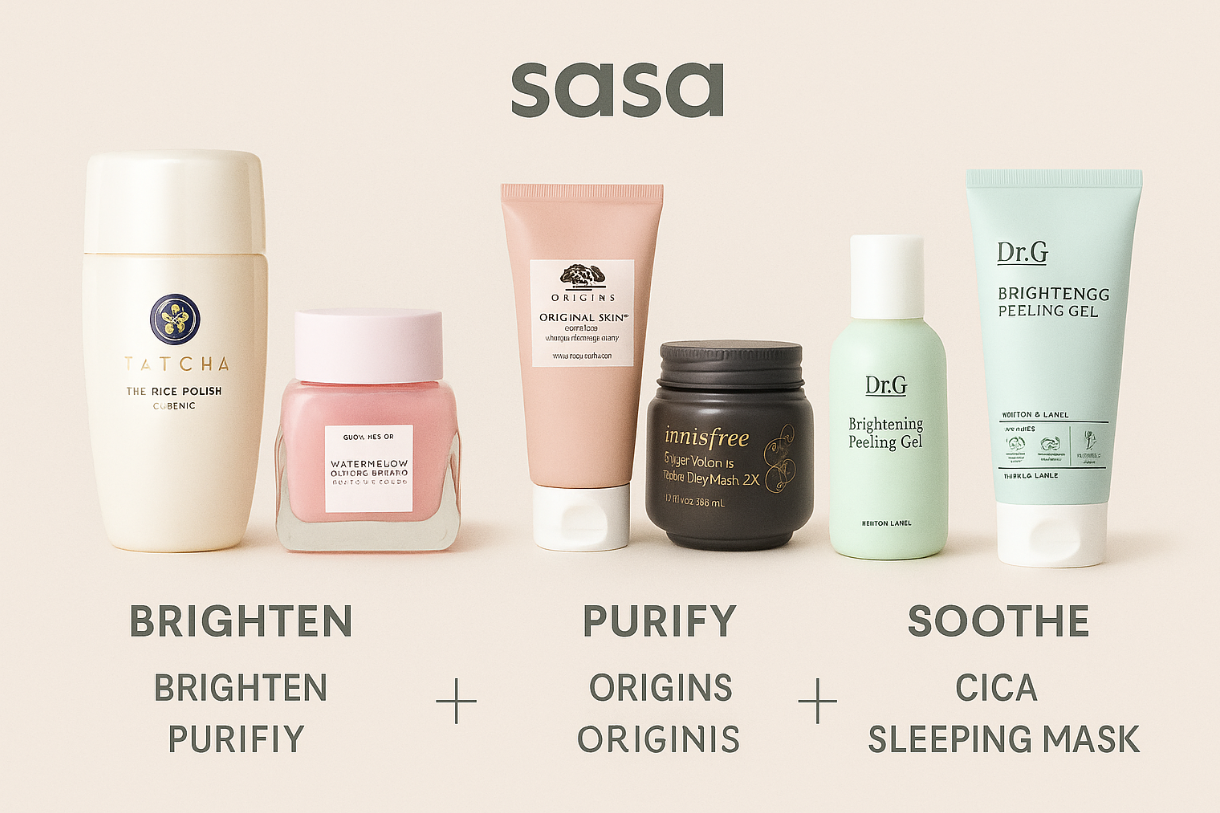
| Goal | Scrub/Exfoliant | Mask |
| Brighten | Rice Enzyme Polish | Glow Recipe Watermelon Mask |
| Purify | Neogen Bio-Peel Gauze (Green Tea) | Innisfree Volcanic Clay Mask |
| Soothe | Dr. G Brightening Peeling Gel | Laneige Cica Sleeping Mask |
Usage Tip: For enlarged pores, use purifying pairs 3 times a week. For dullness, brightening combos work best twice a week.
When to Break the Rules: Exceptions You Should Know
Scrub comes first, usually. But skincare isn’t one-size-fits-all. Here’s when flipping the script helps:
Dry or Flaky Skin: Hydrate Before Exfoliating
If your skin feels tight or rough, applying a hydrating mask before your scrub softens stubborn dead cells. Plumped-up skin lets gentle exfoliants (like enzyme powders) lift flakes without rubbing.
How to do it:
- Apply a hydrating mask for 10 minutes. → Rinse
- Gently use a scrub on damp skin → Rinse
- Follow with a lightweight moisturizer.
- Why it works: Hydration swells the first layer of dead skin, making removal safer for sensitive skin.
2-in-1 Products: The Shortcut for Busy Days
Rhassoul clay masks with fine apricot grit let you exfoliate and detoxify in one step. Perfect for travel or humid Singapore nights.
How to use:
- Massage the damp paste in circles for 60 seconds (exfoliation phase)
- Leave as a clay mask for 5-7 minutes (deep cleansing phase)
- Rinse, then hydrate immediately Caution: Avoid if you have an active breakout—friction spreads bacteria.
Overnight Recovery: Skip Clay, Boost Renewal
After intense exfoliating of the skin (e.g., chemical peels), clay masks can over-dry. Instead:
- Cleanse → Exfoliate → Rinse
- Apply face serum with vitamin C or peptides
- Layer a hydrating mask and leave it on overnight Science bit: Sleep boosts cell turnover. Hydration + darkness = firmness and dullness reduction by dawn.
For Enlarged Pores: The "Pre-Cool" Trick
Icy temps tighten pores. If using a clay mask after a scrub:
- Chill the mask for 10 minutes before applying
- Press a cold spoon over the T-zone post-rinse This maximizes pore refinement after exfoliation.
Key Tweaks Summary
| Situation | Order Change | Avoid |
| Flaky Patches | Hydrating mask → Scrub | Gritty scrubs |
| Travel Routine | 2-in-1 exfoliate + mask | Leaving on >7 minutes |
| Post-Peel Care | Exfoliate → Overnight hydration | Clay masks |
Aftercare: Why Hydration is Non-Negotiable
Clay masks and scrubs remove sebum and dead cells, but also natural moisture. Skipping hydration causes tightness and sensitive skin. Always follow with:
- Toner: Rebalances pH (e.g., salicylic acid for oily skin).
- Face Serum: Vitamin C for complexion glow, or hyaluronic acid to nourish.
- Moisturize: Locks in active ingredients and supports skin barrier regeneration.
Discover Online Deals and Expert Beauty Tips at Sa Sa Singapore
Master your glow with confidence and science! From the essential rule of exfoliating before masking to skin-specific adaptations for oiliness, dryness, or sensitivity, this guide empowers you to transform dullness into radiance—whether prepping for humid days, overnight recovery, or battling enlarged pores.
At Sa Sa Singapore, we celebrate skincare as self-care, offering dermatologist-trusted products such as Fresh Mate Peat Mask Pore Clearing and exclusive deals to help you experiment wisely. Remember: glowing skin isn’t just about products—it’s about order, consistency, and listening to your skin’s needs, whether you’re refining pores, soothing redness, or boosting collagen renewal.
Ready to reveal your healthiest complexion? Your journey to balanced, luminous skin begins now.
FAQs: Your Burning Questions Answered
- Q: Can I use a face scrub and clay mask back-to-back?
A: Yes, but only if you use a face scrub first, rinse thoroughly, then apply the face mask. Never layer them simultaneously or use harsh exfoliator on dry mask residue. Sensitive skin should space them 12 hours or more apart. - Q: Why is it important to exfoliate your skin before masking?
A: Exfoliation removes the layer of dead cells, allowing the face mask to penetrate deeper. If you skip this step, masks sit on surface debris instead of cleansing the skin deeply, wasting their benefits. - Q: How often should I use an exfoliator or exfoliating mask?
A: Most dermatologists recommend exfoliating 1- 3x weekly max. Overuse strips the skin of its natural oils and damages collagen support. For daily renewal, try gentle acids (PHA, lactic) instead of gritty scrubs. - Q: Can a clay mask replace my cleanser?
A: No. Always start with a cleanser to lift dirt from your entire face. Masks treat specific concerns (oil absorption, pores) but don’t fully cleanse the skin. Skipping cleansing traps grime under the mask application. - Q: My favorite mask feels tight—is that normal?
A: Mild tightness when a clay mask dries is normal. But if it stings or cracks, rinse immediately! This signals over-drying. Always follow with hydration to protect collagen and barrier health—try a soothing serum post-rinse.
Author
Mei Ling Cheng is a seasoned beauty expert with over 15 years of experience in makeup artistry and skincare consulting. As a leading beauty advisor at Sa Sa Malaysia, she helps customers achieve flawless, long-lasting looks.
Featured Products in this Post
Related Posts
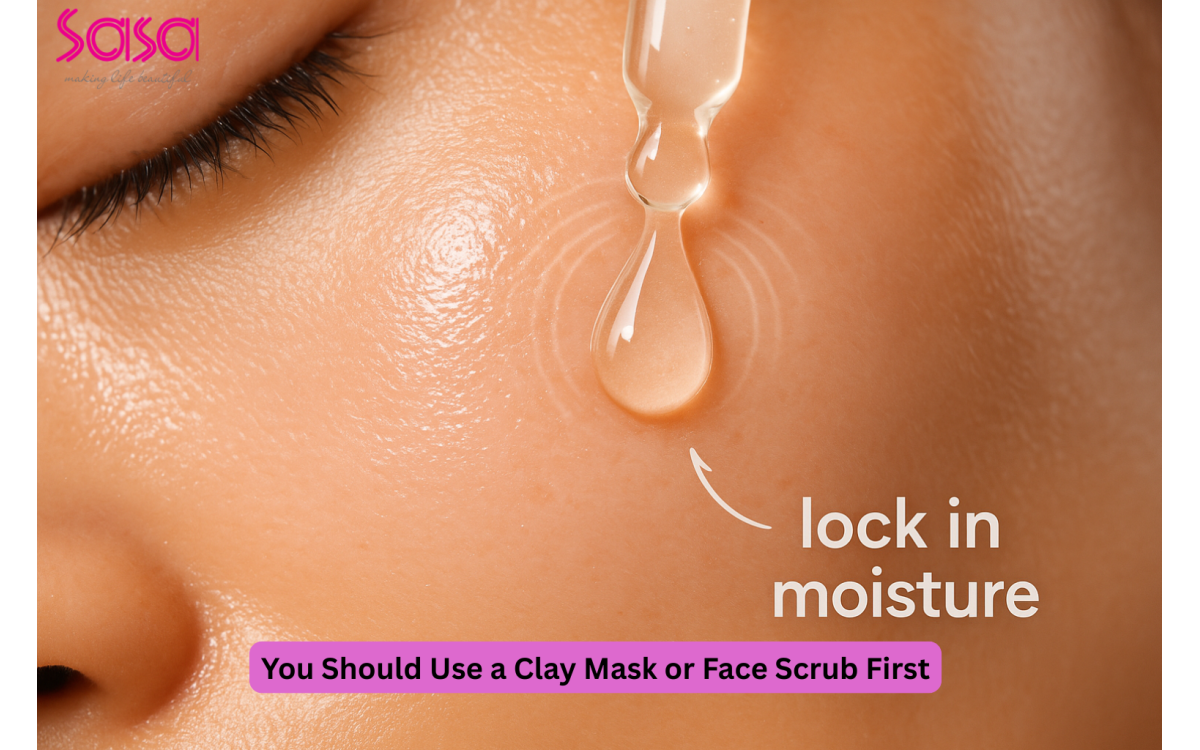
Should You Use a Clay Mask or Face Scrub First? The Correct Order for Your Skin Type
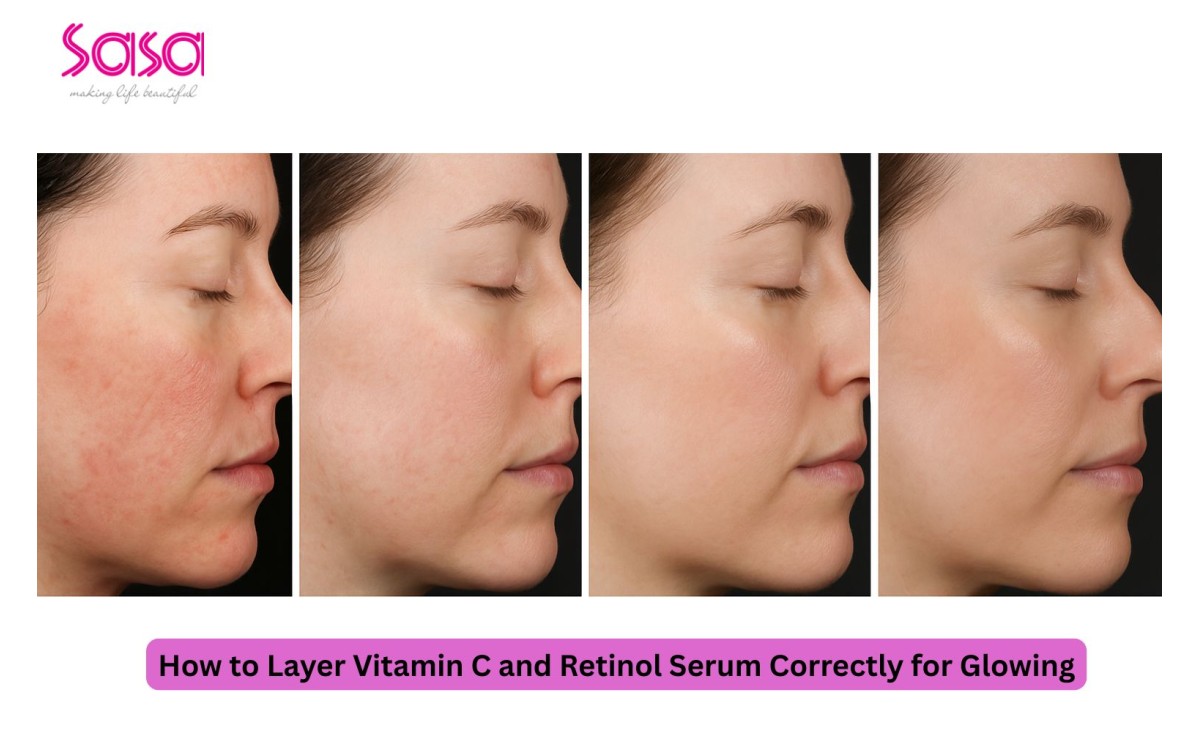
How to Layer Vitamin C and Retinol Serum Correctly for Glowing
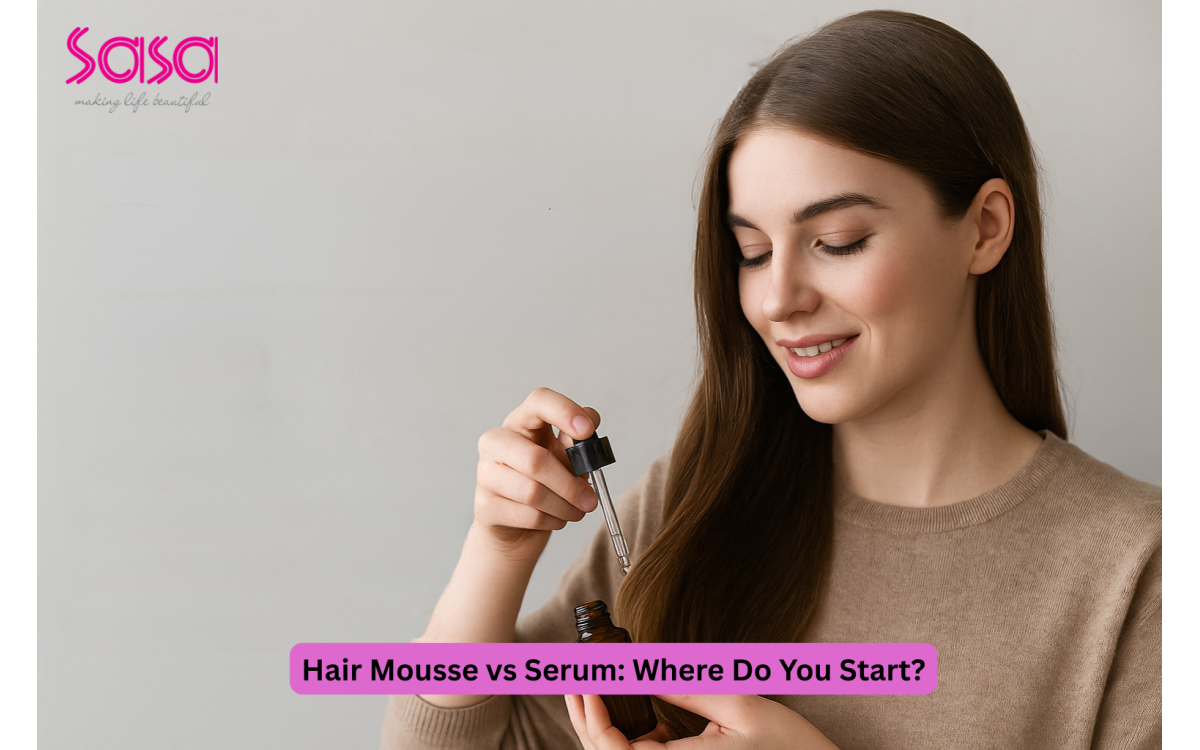
Hair Serum or Hair Mousse: Best Hair Styling for Thin, Dry Hair?

Choosing a Face Mask for Your Skin Type & Skincare Routine
21 Nov 2025

Best Sunscreen Brands for Singapore's Humid Weather
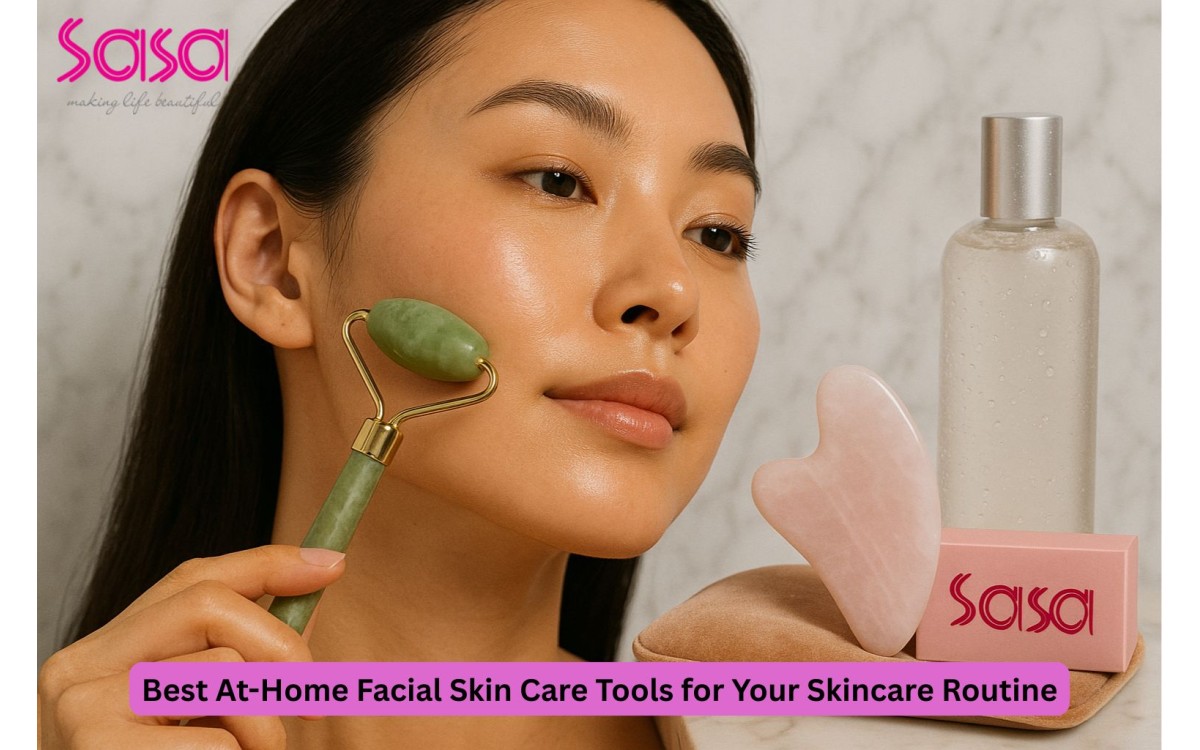
Best At-Home Facial Skin Care Tools for Your Skincare Routine
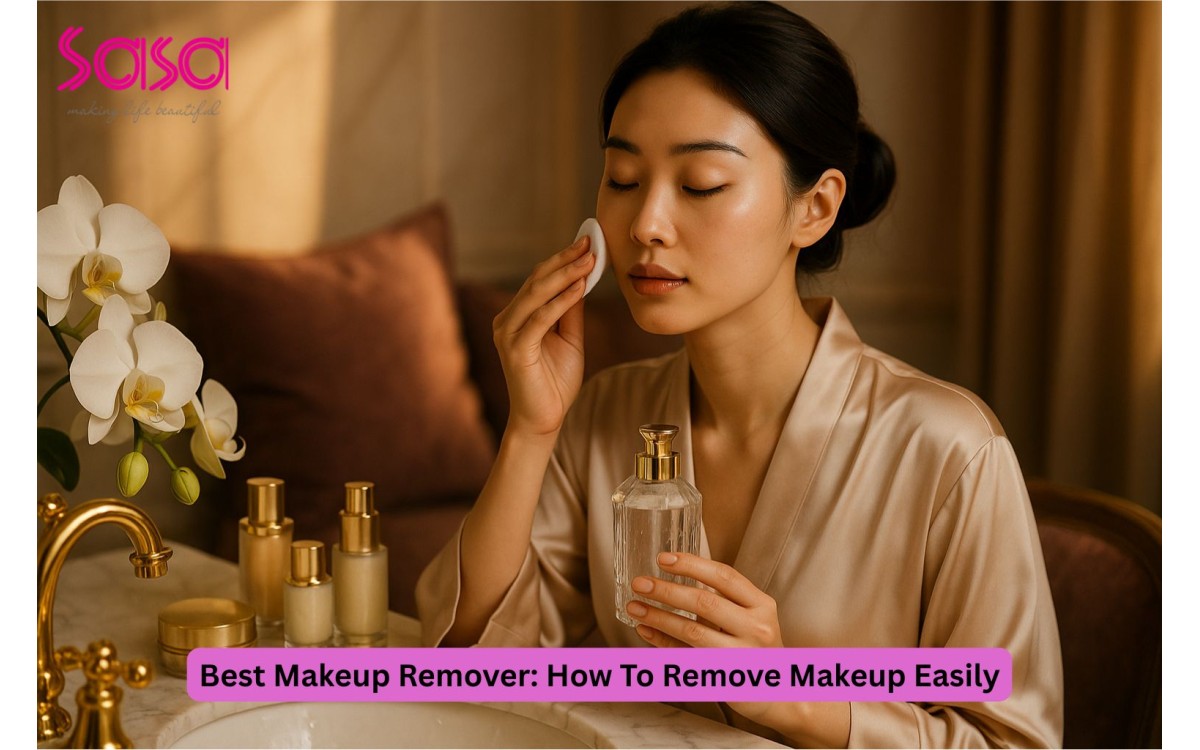
Best Makeup Remover: How To Remove Makeup Easily



